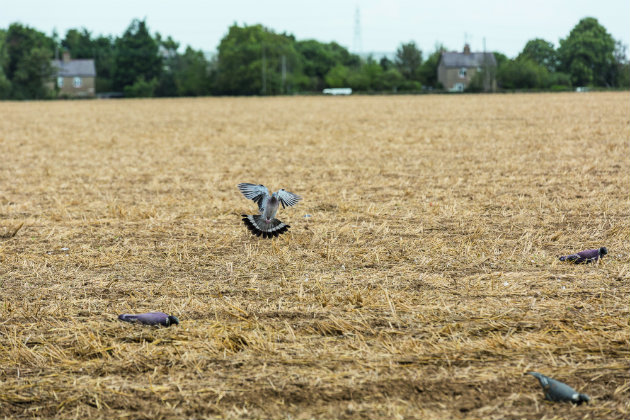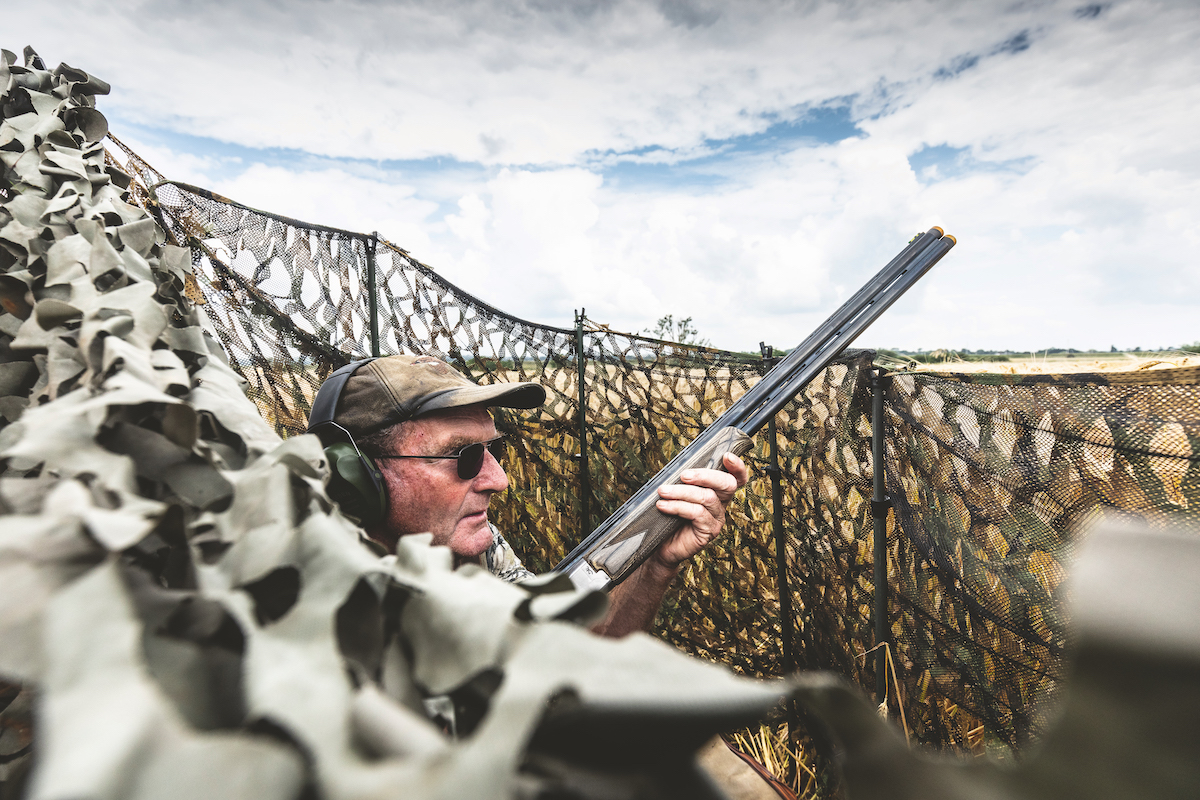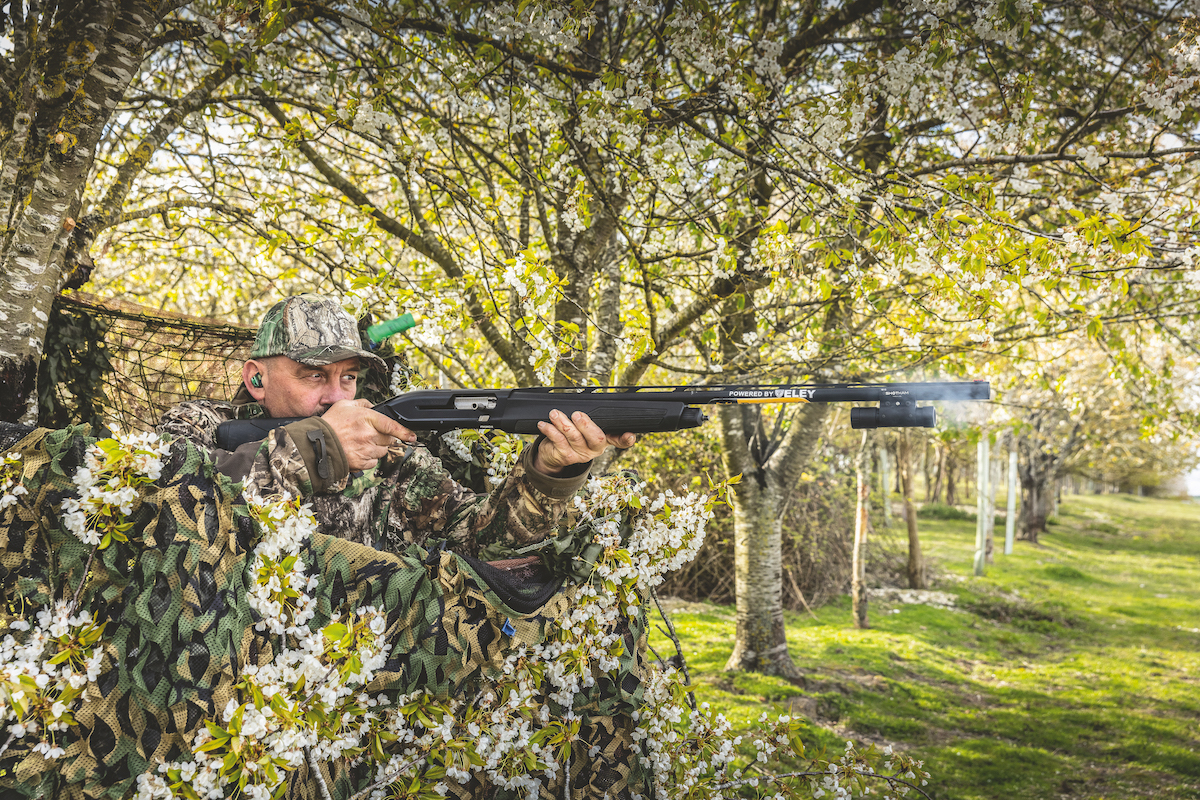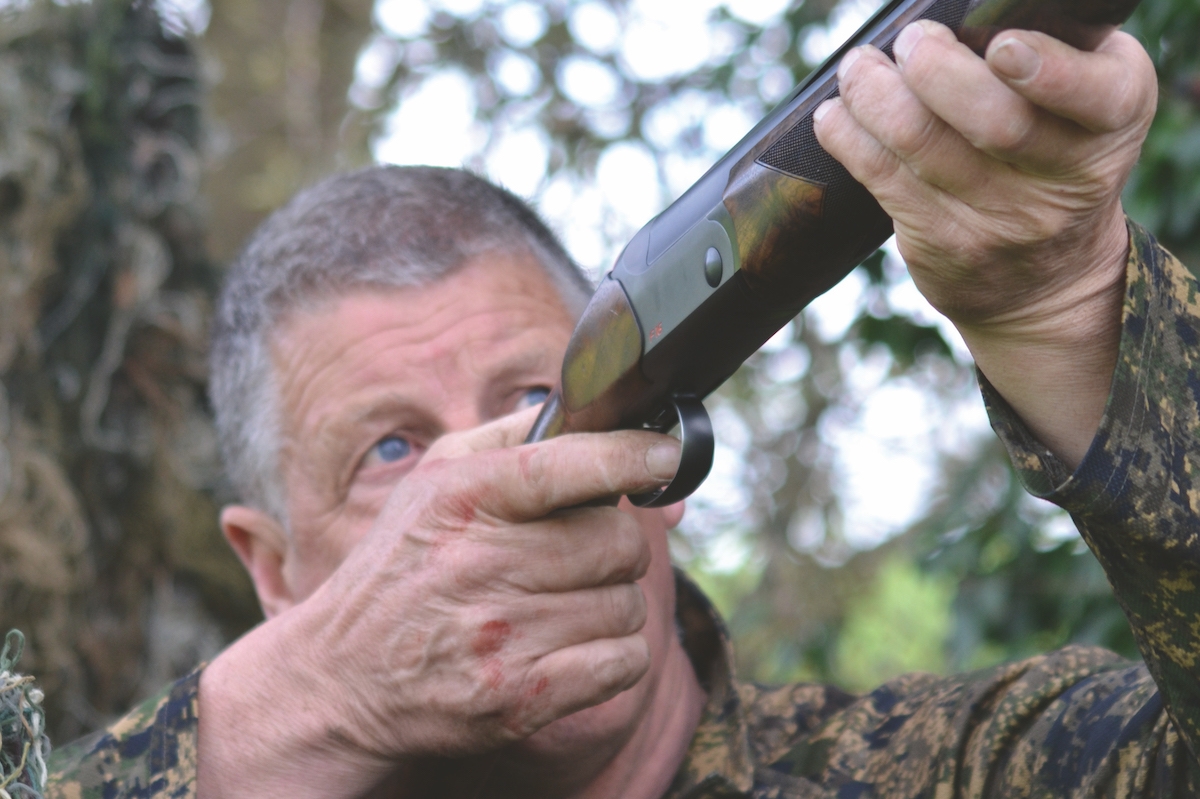The myth of pigeon pattern
As decoyers, it has been drummed into us to create a pattern with our decoys, but really the only thing that matters is being in the right place, on the right field, at the right time

The pigeon can be very gullible in the right circumstances
As you would expect, I spend a lot of time watching pigeons, from picking up flightlines to trying to find their favourite field at any given time of year. I get plenty of opportunity to watch birds on the ground, and to observe how they cover the ground while feeding. After 50 years of doing this, I can say with some confidence that pigeons do not feed in any kind of “pattern” nor do they face predominantly into the wind.
Admittedly, they will approach the feeding flock heading into wind given the choice, but I have seen untold instances of birds hurtling downwind to turn at the last possible moment and land with a couple of flaps of their wings, such is the manoeuvrability of this fantastic sporting bird.

The key to a successful day is being in the right place at the right time
Once safely down, the bird will commence feeding, turning this way and that, and quite often wandering within touching distance of nearby pals. I was watching some 30 pigeons feeding on the tramline of a rape stubble recently, and you could have covered the lot with a tablecloth they were so tightly packed.
Replicate the position
Now, every book I have read and every pundit I have listened to, will tell you that you must try to replicate the position of real birds when setting out your decoys, yet when have you ever set 30 decoys on a piece of ground 10ft square?
As decoyers, it has been drummed into us to create a pattern with our decoys, some “experts” even measure the distance between each decoy with military precision, making sure that no deek has its back to the wind. I too was sucked into following this mantra for many years, even describing the U-shaped pattern I used in my book.
Your decoy shape makes no difference
But this was written more than 20 years ago and the simple fact is that it doesn’t make the blindest difference to the success of the day, whether you set your decoys in an “I” shape, “U” shape or any other kind of shape. The only thing that matters is that you are in the right place, on the right field, at the right time.
I’ve proved it so many times on days when pigeons have been wary of the set-up. I have fiddled with the pattern, changed the position of the whirly, taken the whirly in, put flappers out, taken flappers in, and rarely does it make any difference. The usual conclusion is that I was in the wrong place, or the birds had been beaten up recently and were naturally wary of any artificial set-up.

Peter is still amazed why pigeons are attracted to a rotary machine
Pulling power
Even with the help of a modern electronic kit, we still have not managed to mimic accurately how a pigeon lands among the decoys, which is why a single real bird landing out in the field will have a greater pulling power than 50 artificial birds and a spinner.
I am still amazed why a pigeon is attracted to a rotary machine as often as it is because I don’t think they look realistic at all! The latest flappers are a bit better, but still do not replicate that rapid wingbeat as a pigeon pitches in. We still get good results with the rotary machines, but usually when the population has not been regularly exposed to them. It won’t take you long to figure this out because pigeons virtually do a somersault when they spot the machine, something you will never see them do when they see their pals feeding. Even on successful days, pigeons simply will not fly over the machine. Even if they have not been spooked by it, they will usually pass by on one side or the other, a habit we exploit by setting two hides 50 yards apart.

As decoyers, it has been drummed into us to create a pattern with our decoys
It is also a mistake to imagine that every pigeon that spots your layout is going to try and join it, even though you may be sure that this is the busiest field for miles around. On the really big days we usually find that the entire field will have birds feeding all over it, and it is quite difficult to get them away. Once the birds have located where their mates are feeding, they are quite happy to land elsewhere on the field. Only on oilseed rape in the winter will pigeons unerringly seek out the feeding flock and continue up the flightline until they locate it. All the birds will be in one spot on the field, feeding tightly together for security and departing as one when disturbed. That is why we try to shoot only on windy days in the winter, to disrupt this pattern.
Pigeons taking evasive action
While all successful decoyers try to create a set-up where incoming birds are attracted to within 25 yards of the hide, the fact remains that you would have to remove shot birds from these areas fairly regularly to maintain a constant flow.
On busy days this is always counterproductive, not only are you scaring birds that can see you out of your hide, but also pigeons that may be coming up the flightline, only to see their mates up ahead take evasive action. I know I keep banging on about it, and many people still do not believe me, but leaving shot birds where they fall will not deter fresh arrivals from coming in.
Obviously, when the landing areas become too congested we must be prepared to take birds at longer ranges, a challenge we relish and much prefer to faffing about constantly to create that mythical “killing pattern”.
How to choose the right shotgun and cartridge for pigeon shooting
Shotguns and cartridges for pigeon shooting It’s taken me a few years to discover the best shotguns and cartridges for…
Top tips for a successful pigeon shooting technique
I am so fortunate to be out and about shooting pigeon all the time. I’ve had the privilege to learn from some of…
How to shoot more pigeon from a hide
So many pigeon shooters forget to practise when they get the chance, only to suffer inconsistent results when they shoot…











